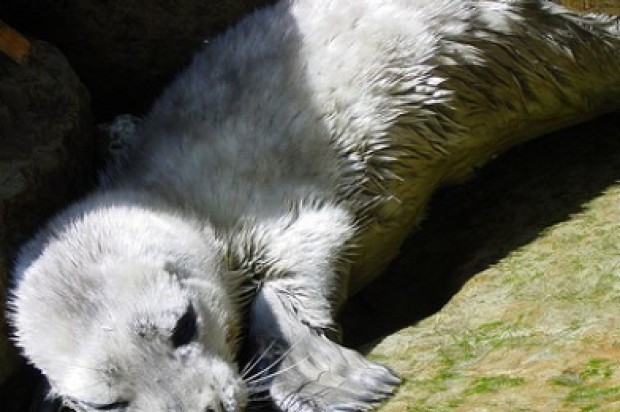
As harbor seal pups are now being born on Bay Area beaches, beachgoers are reminded to stay away from newborn pups even if they are concerned that the pup may be orphaned, officials at the National Oceanic and Atmospheric Administration said.
Newborn pups could suffer permanent harm if moved by someone not authorized for marine mammal rescues.
Under the Marine Mammal Protection Act, seals are federally protected animals and anyone who interferes with one could face legal penalties, according to NOAA.
Due to lack of education about Harbor seals, healthy seal pups are separated from their mothers each year by people who mistake them for orphans, NOAA officials said.
In fact, Harbor seal mothers normally leave their seal pups unattended on beaches while they are out feeding at sea. The mother usually returns and nurses her pup.
The presence of humans or dogs too near to a seal pup could prevent a mother seal from reuniting with her pup, causing the pup to die, NOAA scientists said.
Persistent disturbances at a seal rookery could cause numerous mother seals not to reunite with their newborns, thus contributing to overall lower birth rates.
Jan Roletto, a marine biologist at the Gulf of the Farallones National Marine Sanctuary, said that as a general rule people and pets are too close to a seal if it reacts to their presence. If a seal notices you, Roletto recommends backing away slowly and avoiding eye contact with the seals.
Some wildlife experts recommend staying 300 feet away from any pup seals, according to NOAA.
About one-fifth of the harbor seals on California’s coast live in the Gulf of the Farallones and the largest breeding grounds for harbor seals is in Point Reyes National Seashore with the prime spots being Drake’s Bay, Tomales Bay and Bolinas Lagoon, NOAA said.
In San Mateo County, rookeries are mainly located in Fitzgerald Marine Reserve and Bean Hollow.
Harbor seals haul outs in groups ranging from a few to a few hundred, NOAA said.
Females Harbor seals generally give birth on sandy beaches and rocky reefs to a single pup and nurse that pup for three to four weeks, according to NOAA scientists.
The Farallones National Marine Sanctuary has encompassed nearly 1,300 square miles of ocean and coastal waters beyond the Golden Gate Bridge.
White sharks, endangered blue and humpback whales, and the largest seabird rookery in the contiguous U.S. are all supported in the sanctuary.
Mary Jane Schramm, spokeswoman for the NOAA Gulf of the Farallones National Marine Sanctuary, is urging beachgoers to steer clear of the seal pups.
“Those helpless-seeming, winsome bundles of fur now appearing on Bay Area and North County beaches may have moms who’re fishing just a short distance away, waiting to reclaim them,” Schramm said.
Concerned beachgoers from Bodega Head in the north to Point Ano Nuevo in the south are advised to report suspected orphaned or injured pups to a park ranger or to the Marine Mammal Center at (415) 289-7325, Gulf of the Farallones National Marine Sanctuary at (415) 561-6622 ext. 200, Point Reyes National Seashore at (415) 464-5170 or NOAA’s Enforcement Hotline at (800) 853-1064.
Hannah Albarazi, Bay City News









